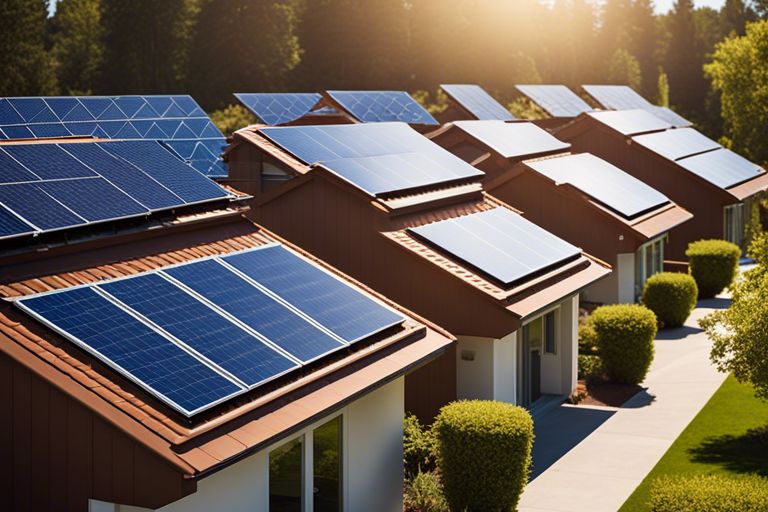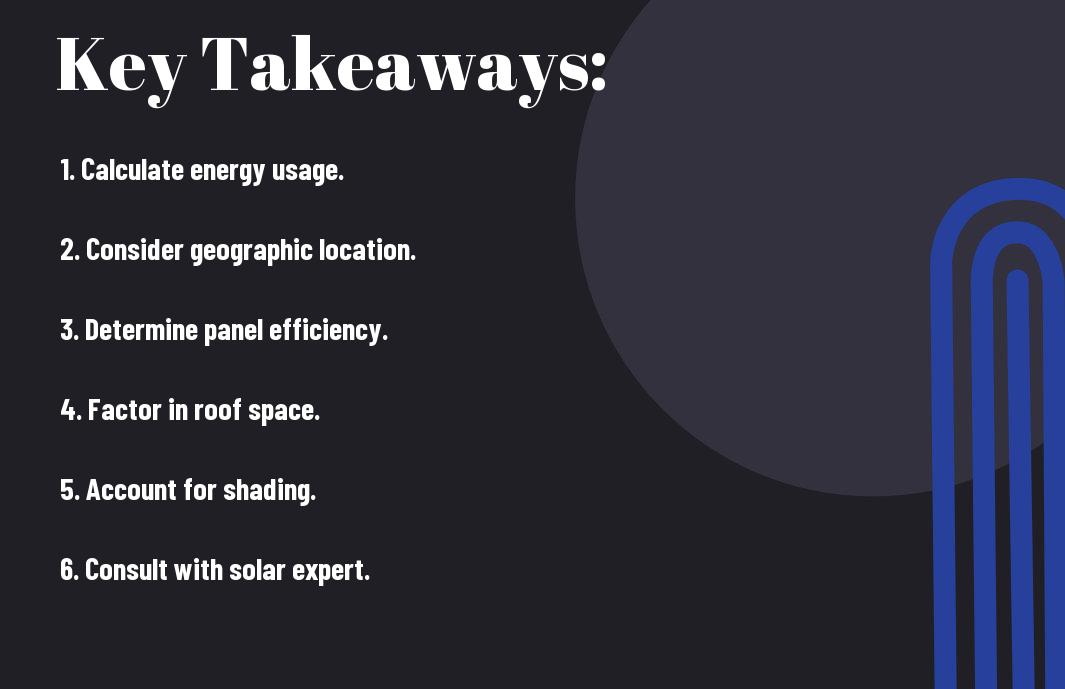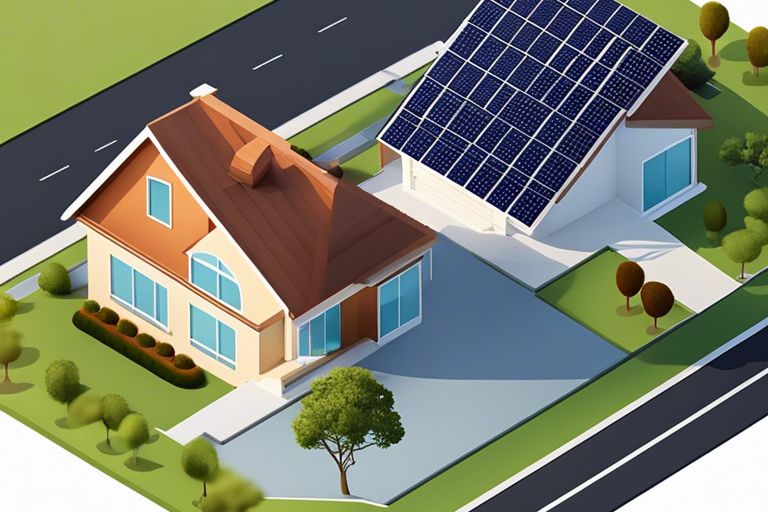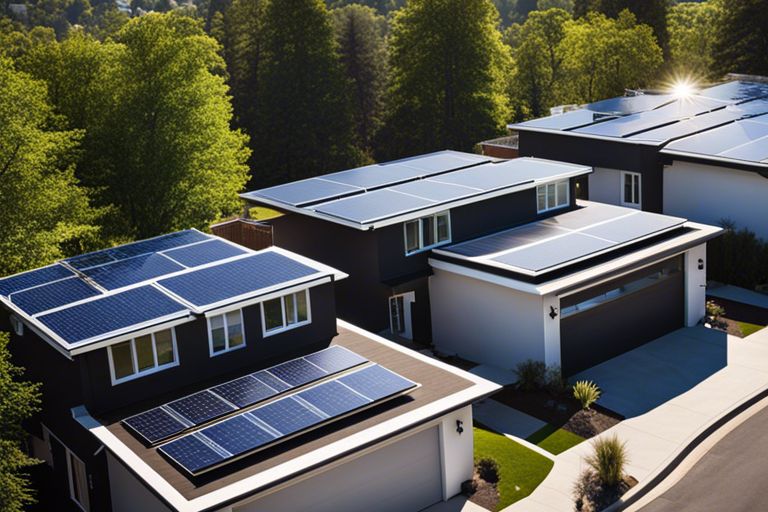It’s important to consider the size of your 3,000 sq ft home when determining how many solar panels you need. Factors like your average energy usage, the efficiency of the panels, and your location’s sunlight exposure all play a role in the calculation. To get a better understanding of the solar panel cost per square foot and how many panels you may need, you can check out Solar Panel Cost per Square Foot: How Much Will … for more information.

Key Takeaways:
- Rooftop Space: The number of solar panels required for a 3,000 sq ft home will depend on the available rooftop space for installation.
- Energy Consumption: Consider your household’s daily energy consumption to determine the number of solar panels needed to cover your electricity needs.
- Solar Panel Efficiency: High-efficiency solar panels can generate more electricity in limited space, potentially reducing the number of panels required for a 3,000 sq ft home.

Determining Your Energy Needs
A key step in deciding how many solar panels you need for your 3,000 sq ft home is understanding your energy needs. To do this, you must calculate your energy consumption and consider the factors that affect how much energy your household uses.
Calculating Your Energy Consumption
On average, a 3,000 sq ft home in the US uses about 877 kWh of electricity per month. To calculate your specific energy consumption, you can look at your past utility bills to determine how many kilowatt-hours you use in a given period. This will help you estimate how much energy your home consumes on a monthly or yearly basis.
Factors Affecting Energy Usage
Energy consumption can vary based on several factors specific to your household. Some of the main factors that affect energy usage include the size of your home, the number of occupants, the climate in your region, the efficiency of your appliances, and your daily habits. By considering these factors, you can get a clearer picture of how much energy your home consumes and make more informed decisions about your solar panel needs.
- The size of your home
- The number of occupants in your household
To accurately assess your energy needs, you can also conduct a home energy audit. This assessment will help identify areas where energy is being wasted and suggest ways to improve energy efficiency. Knowing how these factors impact your energy usage will empower you to make adjustments to reduce your electricity consumption and better understand your solar panel requirements.
- The climate in your region
- The efficiency of your appliances

Assessing Your Home’s Solar Potential
Roof Size and Orientation
Solar panels require adequate roof space to generate enough energy to power your home. The size and orientation of your roof will play a crucial role in determining how many solar panels you will need. A south-facing roof with minimal shading is ideal for maximizing sunlight exposure throughout the day. Additionally, the pitch of your roof can also impact the efficiency of the solar panels.
Shading and Obstructions
Assessing the shading and obstructions around your home is imperative to determine your solar potential. Trees, buildings, and other obstructions can block sunlight and reduce the efficiency of your solar panels. It’s important to evaluate these factors throughout the day to understand how they may impact the performance of your solar energy system.
Shading from nearby structures or trees in the morning or late afternoon could significantly reduce the amount of sunlight reaching your solar panels during those times. By identifying and addressing potential shading issues, you can optimize the performance of your solar energy system and maximize energy production.
Sizing Your Solar Panel System
Calculating Your Solar Panel Requirements
Once again, to determine how many solar panels you need for your 3,000 sq ft home, you’ll need to consider your average daily energy consumption, the amount of sunlight your location receives, and the efficiency of the solar panels you choose. On average, each square foot of a solar panel produces about 15 watts of power, but this can vary depending on the quality and efficiency of the panels.
Considering Efficiency and Quality
To ensure you’re getting the most out of your solar panel system, it’s important to consider the efficiency and quality of the panels you choose. High-efficiency panels will produce more power per square foot, allowing you to generate more electricity with fewer panels. Additionally, investing in higher quality panels can lead to a longer lifespan and better performance over time, ultimately saving you money in the long run.
When considering efficiency and quality, make sure to look for panels with a high efficiency rating (typically above 20%) and a solid warranty. While these panels may have a higher upfront cost, the long-term benefits make them a worthwhile investment for your home.
Roof Size and Layout Considerations
Available Roof Space
To determine how many solar panels you need for your 3,000 sq ft home, you first need to consider the available roof space. Your roof size will directly impact the number of solar panels that can be installed. Make sure to assess how much of your roof is unobstructed by shade or other obstructions to maximize the sunlight exposure for your solar panels.
Panel Configuration Options
In the context of panel configuration options for your solar system, there are a few factors to consider. One option is to go with standard solar panels mounted parallel to your roof. Another option is to consider tilted panels for better angle towards the sun. Your solar installer can help you determine the best configuration based on your roof layout and sun exposure.
Configuration of your solar panels can significantly impact the efficiency of your system. By choosing the right panel configuration, you can optimize the sunlight capture and energy production of your solar panels, ensuring maximum savings on your electricity bills.
Energy Efficiency Upgrades to Consider
Improving Insulation and Windows
Insulation is key to keeping your home energy-efficient. By properly insulating your walls, floors, and attic, you can reduce the amount of heat that escapes in the winter and seeps in during the summer. This means your HVAC system won’t have to work as hard to maintain a comfortable temperature, ultimately saving you money on your energy bills. Upgrading to energy-efficient windows can also make a big difference, as they can prevent drafts and reduce heat transfer.
Upgrading to Energy-Efficient Appliances
To further increase your home’s energy efficiency, consider upgrading to energy-efficient appliances. Energy Star-rated appliances consume less energy than their conventional counterparts, which can lead to significant savings over time. From refrigerators to washing machines, there are Energy Star options available for all your household needs.
As appliances typically have a long lifespan, investing in energy-efficient models can have a lasting impact on your home’s energy consumption. Not only will you be reducing your carbon footprint, but you’ll also be saving money on your utility bills in the long run.
Local Building Codes and Regulations
Unlike federal regulations, local building codes and regulations can vary significantly from one region to another. It is imperative to research and understand the specific requirements in your area before installing solar panels on your 3,000 sq ft home. Non-compliance can result in fines, delays, or even the need to remove the solar panel system altogether.
Permits and Inspections
An important aspect of complying with local regulations is obtaining the necessary permits and scheduling inspections for your solar panel installation. Your local building department will have specific requirements for permitting, and inspections may be needed at various stages of the installation process to ensure safety and compliance with local codes.
Compliance with Local Ordinances
With the increasing popularity of solar panels, many cities and municipalities have established specific ordinances related to their installation. These may include regulations on the placement of panels, the visibility of the system from the street, or even the color of the panels. It is crucial to familiarize yourself with these ordinances to avoid any issues during the installation process.
To ensure compliance with local ordinances, you may need to work closely with a solar panel installer who is familiar with the regulations in your area. They can help you navigate the permitting process and ensure that your system meets all the necessary requirements for a successful installation.
Summing up
With these considerations in mind, the number of solar panels you need for a 3,000 sq ft home will ultimately depend on your energy consumption, location, roof size, type of panel, and efficiency. On average, a 3,000 sq ft home may require between 20 to 40 solar panels, but it’s best to consult with a solar energy provider to get a more accurate estimate based on your specific needs and circumstances. Investing in solar panels can not only help you save money on energy bills but also contribute to a more sustainable and environmentally friendly home.
Q: How do I determine how many solar panels I need for a 3,000 sq ft home?
A: To determine the number of solar panels you need for a 3,000 sq ft home, you need to consider factors such as your location, the amount of sunlight the area receives, the efficiency of the solar panels, and your average energy consumption. It’s best to consult with a solar energy expert who can analyze your specific needs and provide you with a customized solution.
Q: What is the average number of solar panels needed for a 3,000 sq ft home?
A: On average, a 3,000 sq ft home may require between 25 to 40 solar panels to meet its energy needs. However, this number can vary depending on factors such as energy consumption patterns, roof orientation, shading, and the efficiency of the solar panels used. A professional solar installer can help you determine the exact number of panels needed for your home.
Q: How much energy can solar panels produce for a 3,000 sq ft home?
A: The amount of energy that solar panels can produce for a 3,000 sq ft home depends on factors such as the size and efficiency of the panels, the amount of sunlight the area receives, and your energy consumption. On average, a well-designed solar panel system can generate enough electricity to cover a significant portion of a 3,000 sq ft home’s energy needs, potentially leading to significant savings on utility bills.
